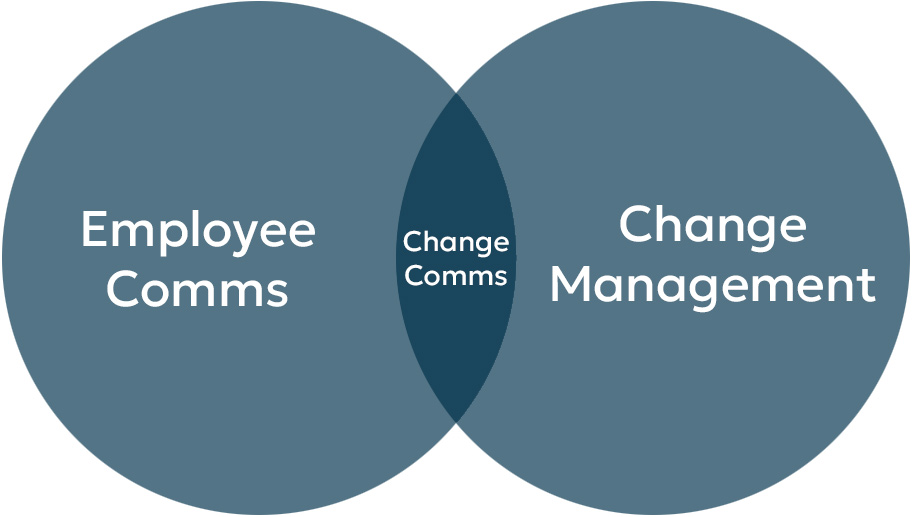Sometimes it can be simpler to define something by telling you what it’s not. A pizza isn’t a balanced meal, a pair of scissors isn’t a toy.
Change communications isn’t change management and change communications isn’t the same as employee communications. It’s also not a meal or a toy.
So, what is change communications? And why is it important?
Let’s start by defining employee communications. For as long as workplaces have been a thing (think a few thousand years or more) bosses have been communicating to their underlings. Generally speaking, lashings and shouting have been phased out, although the employment tribunal is still a testament to some pretty weird workplace behaviour.
There was a long period where employee communications generally meant immediate bosses talking directly to their teams, then came the internal company newsletter phase and in the 1990s the intranet burst through our computer screens. This was really the catalyst for the establishment of employee communications as a discipline in its own right and increased academic interest.
Day-to-day employee communications generally covers company updates, news and feedback. The topics range from strategy announcements, launches of new products or services, customer stories, employee achievements and announcing financial results or new executives. It’s an adjunct, not a replacement for the communications from line managers
The desired outcomes of employee communications are usually:
- Alignment – ensuring everyone in the company is aligned on where the company is headed, the behaviour it expects and what people need to do to be successful and get promoted
- Engagement and retention – Talking about the wider company outside of a person’s immediate team so that people feel inspired to give their best and continue to work there.
Change Communications
Change communications focuses on communicating significant organisational changes to employees, such as a restructure, a sale or an acquisition, the introduction of a major new process, system or tool. The communications describes the change, explains why it’s happening, how it will impact employees and what they need to do to adapt to the new situation.
There are three main differences between change communications and employee is:
- The topic of the change communications is highly likely to create a stronger emotional response from your employees and other key audiences
- It’s about something that has a defined timeframe
- It has a specific goal.
The outcomes for change communications are much the same as employee communications but the big difference is the risks to reputation and culture are much higher with a change project:
- Employees can resist the changes causing loss of productivity and a distraction for management.
- Trade unions representing employees can step in if they feel that employees are not being fairly dealt with.
- Employees not impacted by the change may still have strong feelings about the changes.
- The media, regulators and politicians might be interested in your changes and want to offer opinions or use their influence to make the general public aware of the plans.
Change Management
Change management is a professional discipline in its own right and the Change Management Institute defines it as:
“Change management represents a domain of principles and practices that enable stakeholders of change to adopt the mindsets, behaviours and capabilities required for that change to deliver full business value. It focuses on people.”
Chat GPT also helpfully provides this user friendly definition:
“Change management is a structured approach to transitioning individuals, teams and organisations from a current state to a desired future state. It involves planning, implementing and sustaining change to achieve business objectives while minimising resistance and disruption”
Communications is one of five key aspects of change management; the others are:
- Managing how employees adapt to change.
- Ensuring the change is structured and well-executed.
- Providing resources to help employees adapt.
- Embedding new practices into the organisation’s culture.
In summary
Change communications is the overlap between change management and employee communications. To do it well you need to understand the principles of change management as well as being a gun at employee communications. Understanding change management doesn’t necessarily mean you know how to communicate effectively and if you’re adept at employee communications it doesn’t hold true that you’ll be across the slippery slopes of change communications either.
It’s like asking the maître d’hotel to stand in for the pastry chef. The maître d may love her petit fours but it doesn’t mean she knows how to make them.

Change communications isn’t a nutritious meal and its definitely not an entertaining toy. Change communications is a key ingredient to delivering an important project and it’s best accomplished by someone who has chalked up some solid experience designing successful change communications.